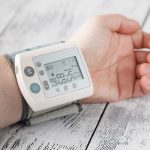
It’s a pricy mainstay on restaurant menus, but avocado toast is an easy and healthy breakfast or lunch that you can make at home. Avocados are full of healthy fats and vitamins C, E and B6. They’re fiber all-stars, too, with 10 grams per cup. Best known as the base for guacamole, because of its creaminess, avocado is now being turned into desserts like puddings and ice cream. Put mashed avocado, a great mayo substitute, on toast and it makes a meal. Avocados are rarely ripe when you buy them, so plan accordingly, allowing for two days of ripening on your windowsill. They should be just soft to the touch, but not mushy. Dark-skinned Hass avocados have a silky, rich taste, and you can get them virtually year-round. Avocado toast couldn’t be simpler to prepare and, despite its pricy cost at restaurants, it’s inexpensive when you make it yourself. Avocado Toast 1 ripe Hass avocado 1/2 lemon 1/4 teaspoon crushed red chili flakes (optional) 1/4 teaspoon salt 2 slices whole grain bread 1 large tomato, sliced 2 teaspoons extra-virgin olive oil 4 basil leaves, torn Cut the avocado open, remove the pit and scoop the flesh into a medium bowl. Squeeze on the juice from the lemon and add the chili flakes and salt. Mash with a fork until smooth. Toast the bread and spread… read on >
















